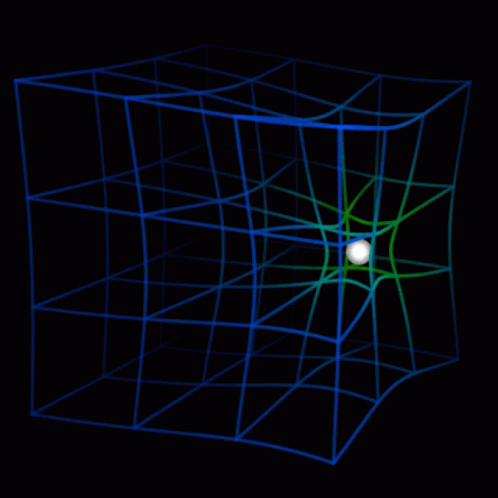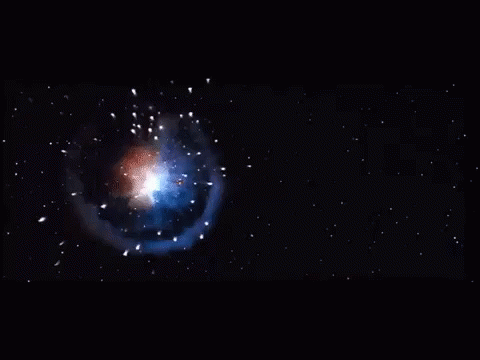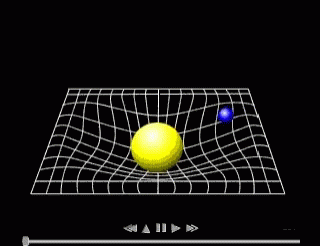
Quantum Entanglement, is a phenomenon that has puzzled scientists for decades. it's a mysterious concept often referred to as "spooky action at a distance.” Now let’s dive deep, let’s explore its implications for our understanding of space, time, and non-locality, and see how it challenges the way we view the universe.
The Quantum Tango
Imagine that you and your best friend are holding a magical coin. These aren't ordinary coins; they can be heads, tails, or both at the same time! Now, no peeking! When you both flip your coins, something incredible happens. If one of you sees heads, the other instantly knows their coin is tails, even if you're miles apart! That's the essence of quantum entanglement - particles that share a mysterious connection.
One of the smartest scientists ever, Albert Einstein, called this idea "spooky action at a distance." He found it incredibly puzzling that particles could communicate with each other instantly, even when they were light-years apart. You see, in Einstein's world of relativity, nothing could travel faster than the speed of light. But quantum entanglement seemed to break that rule!
Let's take a closer look at how quantum entanglement challenges our understanding of space-time, but before that let us have a look at the most famous theories of one of the greatest minds that ever lived, Albert Einstein.

Rethinking Space and Time via Special Relativity
Einstein's theory of special relativity, published in 1905, introduced revolutionary ideas about space and time. Below is a closer look at its key concepts:
- Space and Time are intertwined:

In classical physics, space and time were treated as separate and absolute entities. However, Einstein's special relativity merged them into a single entity known as "space-time." This unification means that the fabric of the universe is not just space or time individually, but a four-dimensional continuum where both are intricately linked.
- The Speed Limit of the Universe:

Special relativity introduced the famous equation E=mc², which states that energy (E) is equivalent to mass (m) times the speed of light (c) squared. This equation revealed that the speed of light in a vacuum (approximately 186,282 miles per second or 299,792,458 meters per second) is the ultimate speed limit in the universe. Nothing with mass can reach or exceed this speed.
3.Time Dilation:
One of the most mind-boggling consequences of special relativity is time dilation. Einstein showed that time doesn't tick at the same rate for everyone. When objects are in motion relative to each other, time slows down for the moving object compared to a stationary observer. This means that the faster you move, the slower time passes for you. This phenomenon has been experimentally confirmed and is used in technologies like GPS to account for differences in satellite and Earth-bound clocks.
Gravity as Warped Space-time? General Relativity suggests that!
In a paper published in 1915, Sir. Albert Einstein took his ideas about space and time even further, introducing a revolutionary new concept of gravity:
- Gravity as a Result of Curved Space-time:

Prior to 1915, physicists and the scientific community believed gravity to be a force of attraction between massive objects separated by a distance, as described by Isaac Newton. However, General relativity abolished this thinking and re-introduced gravity as a force resulting from the curving or warping of the fabric of space-time around massive objects. Imagine placing a heavy ball on a rubber sheet; it creates a depression in the sheet, causing smaller objects to move toward it.
- Equivalence Principle:
One of the foundational principles of general relativity is the equivalence principle, which states that locally (in a small region of space), there is no way to distinguish between the effects of gravity and acceleration. This principle revolutionized our understanding of how objects behave in gravitational fields.
Gravitational Time Dilation:
General relativity also predicts that the stronger the gravitational field, the slower time flows. This means that clocks in strong gravitational fields run slower than those in weaker fields. This effect has been confirmed through experiments, such as comparing clocks at different altitudes.Predicting the Bending of Light:
One of the earliest experimental confirmations of general relativity was the observation of starlight bending as it passed near the sun during a solar eclipse. This bending of light due to gravity is a key prediction of the theory and demonstrates that space is indeed curved by massive objects.
Clash with Quantum Entanglement
Einstein's theories of relativity clash with the phenomenon of quantum entanglement, revealing a profound tension at the heart of modern physics. Quantum entanglement, as previously explored, involves the instant, non-local connection of entangled particles, defying classical intuitions about space, time, and locality. Here's how these clashes manifest:
Faster-Than-Light Communication: In special relativity, nothing can travel faster than the speed of light. However, quantum entanglement seemingly enables particles to communicate instantaneously across vast distances, challenging the cosmic speed limit imposed by relativity.
Conflict with General Relativity: General relativity's description of gravity as curved space-time and its prediction of the bending of light near massive objects align with classical mechanics. However, quantum mechanics, which encompasses quantum entanglement, operates at a fundamentally different level, where particles can exhibit instantaneous connections that defy the curved space-time framework.
Discrepancy in Quantum and Relativistic Frameworks: These disparities between quantum mechanics and relativity theories suggest an underlying confusion in our understanding of the universe. While both frameworks have been independently successful in explaining different aspects of the cosmos, they have not yet been seamlessly reconciled into a unified theory that can encompass both the macroscopic realm of relativity and the microscopic world of quantum mechanics.

As we wrap up, it's essential to remember that this phenomenon remains one of the most enigmatic and awe-inspiring mysteries in science. It challenges our understanding of space, time, and the fundamental nature of the universe.
Quantum entanglement invites us to ponder questions that push the boundaries of our knowledge.
How can particles instantaneously communicate across vast distances?
Does space and time work differently on the quantum level?
What does this mean for our understanding of the universe as a whole?
Anyways, when we meet again we may have some answers,
In the meantime let your curiosity guide you as you explore the wonders of the universe, both big and small.
thanks for Stopping by.
Read more here
- Einstein, A. (1905). On the electrodynamics of moving bodies. Annalen der physik, 17(10), 891-921.
- Einstein, A. (1915). Die feldgleichungen der gravitation. Sitzungsberichte der Königlich Preußischen Akademie der Wissenschaften, 844-847.
- Horodecki, R., Horodecki, P., Horodecki, M., & Horodecki, K. (2009). Quantum entanglement. Reviews of modern physics, 81(2), 865.
- Vedral, V. (2014). Quantum entanglement. Nature Physics, 10(4), 256-258.
Thanks for your contribution to the STEMsocial community. Feel free to join us on discord to get to know the rest of us!
Please consider delegating to the @stemsocial account (85% of the curation rewards are returned).
You may also include @stemsocial as a beneficiary of the rewards of this post to get a stronger support.
One of the tough topics to understand in the world of physics
True!, but that makes it exciting 🤭